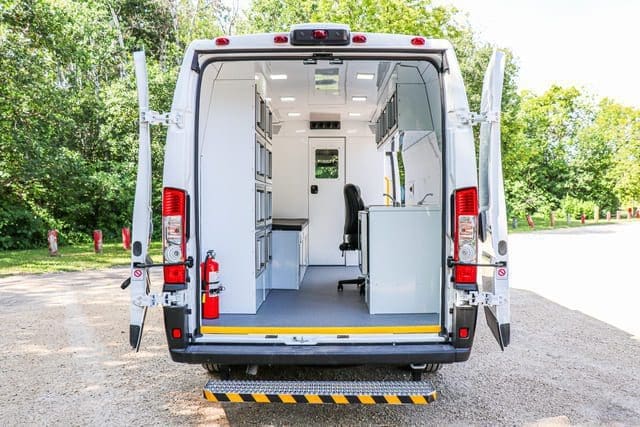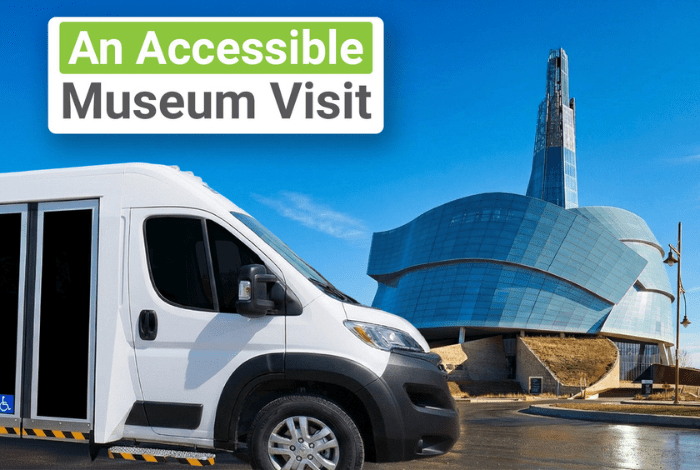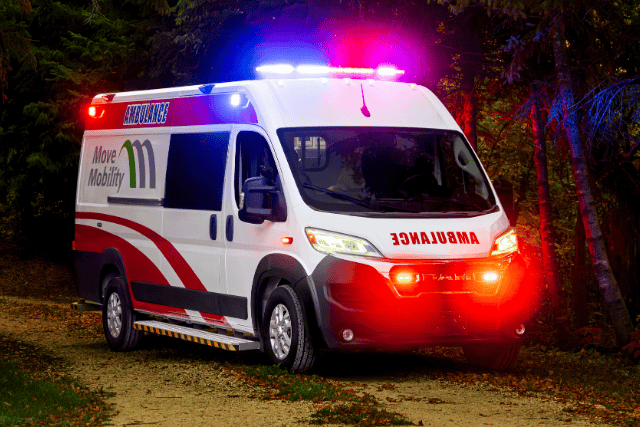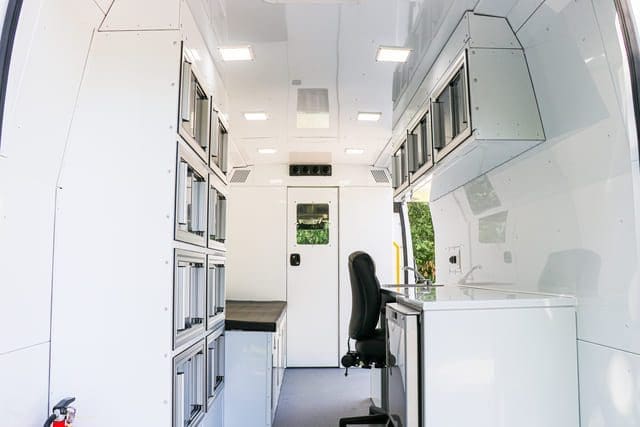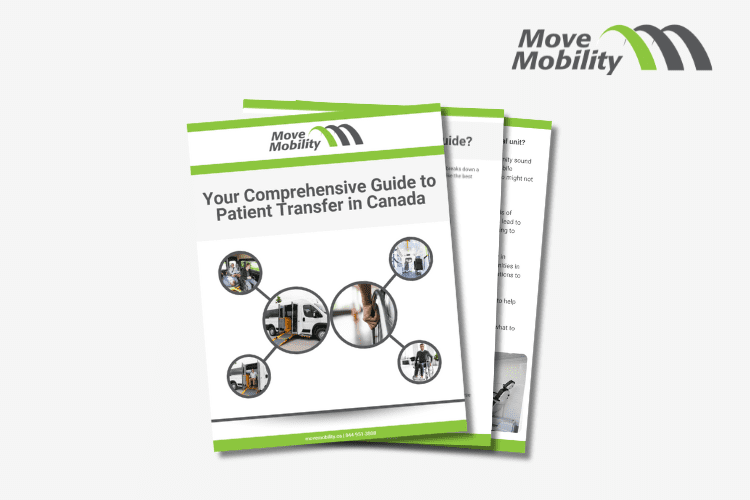20% of Canadians live in a rural area where healthcare access is limited. If you live in one of these places, you’ve likely seen people delay care because the nearest hospital is hours away.
That gap leaves you asking, is my community too small for a mobile medical clinic investment? It’s an important question. If the gap continues, more people will face untreated illness, late diagnoses, and added stress. But imagine a future where care comes closer to home, fewer appointments are missed, and your community feels supported. That’s the kind of change a mobile health clinic can bring.
At MoveMobility, we’ve built over 150 mobile medical units across the 20 years we’ve been in business. We carry Ford QVM and Stellantis QPro certifications, plus the National Safety Mark that proves our vehicles meet strict Canadian safety standards. We’ve partnered with organizations like Liard First Nation to design vans that reflect real community needs. While there are other manufacturers, health teams trust us because we listen first, build second, and support programs long after delivery.
In this article, you’ll explore five key factors to help decide if a mobile clinic is the right fit:
- Population size and service gaps
- Current access to healthcare
- Community demand for services
- Available funding and resources
- Long-term program sustainability
5 considerations to determine if your community is too small for a mobile clinic investment
Before you decide on a mobile medical clinic investment, it helps to look at a few key factors. Think of it like a checklist for your community’s health needs.
1. Population size
It’s natural to wonder if your community is big enough to justify a mobile medical clinic investment. After all, these units can range from $205,000 to $315,000. That’s a large chunk of money, and we understand that you want to feel confident it won’t be wasted. If you live in a community of 10 people, then yes, putting that kind of investment into a mobile clinic wouldn’t make much sense. But most communities asking this question aren’t that small.
Preventive care saves the healthcare system a lot of money. For example, treating diabetes-related complications can cost thousands per patient every year, but catching issues early in a mobile health clinic can dramatically reduce those expenses. According to CIHI, adults with multiple chronic diseases account for more than two-thirds of health-care spending.. Even preventing a handful of hospital visits each month can justify the cost of a mobile medical van over time.
What community population size makes sense?
While there’s no magic number, here’s a way to think about it:
- Under 100 people: A mobile clinic investment is tough to justify unless you’re serving several surrounding communities at once.
- 100 to 1,000 people: A mobile health unit may be viable if the population is spread out or lacks local care options. Partnering with nearby towns often strengthens the case.
- 1,000 to 10,000 people: This range often makes the most sense for mobile clinics. The impact is large enough, and the savings in reduced hospitalizations and improved health outcomes often outweigh the cost.
- 10,000+ people: At this point, a mobile clinic can become essential. Demand will be high, and your mobile medical clinic can reach populations that fixed sites can’t cover.
Bottom line: Population size isn’t only about the raw number of residents. It’s about how many people face gaps in care. Even a few hundred people spread across a wide rural area can benefit from a mobile health unit if the alternative is hours of travel to see a doctor.
When you think about your own community, the real question isn’t “are we too small?” It’s “how many people here could live healthier, safer lives if care were closer to home?”
2. Current access to healthcare
Population size is one piece of the puzzle, but access to healthcare is another big factor in deciding if a mobile medical clinic investment makes sense. You might have 5,000 people in your community, but the need for a mobile clinic could be lower if there’s already a hospital down the road and several primary care clinics nearby. On the flip side, even a community of a few hundred people may benefit if the nearest doctor is several hours away.
Think about the barriers your community faces:
- Distance to care: How far do people travel for basic services like bloodwork, mental health support, or prenatal care?
- Wait times: Are people waiting months for appointments? Long waits often mean small problems become big ones.
- Specialized services: Can residents access things like addiction treatment, wound care, or other specialized health programs without leaving town?
Here’s where the math comes in again. The longer it takes people to get to care, the more likely they are to skip it altogether. Studies show that missed preventive care leads to higher rates of chronic disease, which costs the healthcare system far more than early treatment would. A mobile health unit reduces these gaps by bringing care directly to where people live.
Example: Think of remote communities in Northern Manitoba. Some residents have to fly out for basic healthcare. In cases like this, even a small mobile clinic van can save hundreds of thousands of dollars by reducing travel costs, emergency visits, and hospital admissions.
So, ask yourself: Is your community currently struggling with access? If so, the value of a mobile medical unit goes far beyond the purchase price. It gives your neighbors dignity, reduces stress, and creates healthier futures by meeting people where they are.
3. Community demand for services
Even if your population is the right size and access to care is limited, you still need to look at demand. A mobile medical clinic investment only makes sense if people in your community will actually use it. The good news? In many places, the need is bigger than leaders expect.
Start by asking a few key questions:
- What services are missing? Do people need primary care, mental health support, dental care, or chronic disease management?
- How often do residents travel for care? If folks are leaving town for simple appointments, demand likely exists for a local solution.
- Are community leaders hearing concerns? Sometimes, people quietly struggle without speaking up. Surveys, town halls, or even informal conversations can reveal hidden needs.
A mobile health clinic can be flexible. For example, in Saskatchewan, some mobile units rotate between towns offering weekly clinics. Others in Northern Ontario focus on one type of care, like addiction treatment, because demand for that service is high. The model adapts to the people it serves.
Why does demand matter? If you only expect a handful of visits per month, it will be harder to justify the investment. But if your data or community feedback shows dozens or hundreds of people would use the service regularly, then the investment pays off both financially and socially.
Tip: Don’t underestimate small communities. Even 300 people can create a steady demand if they lack other options. The key is making sure the services match what residents actually need.
When your community shows strong demand, a mobile health unit becomes less of a “nice to have” and more of a lifeline.
4. Available funding and resources for a mobile clinic investment
Even if your community has the right population size and a clear need for services, you’ll likely ask, how do we pay for this? Exploring funding options is a big part of this decision. The good news is you don’t have to carry the cost alone.
Common funding sources include:
- Government grants: Provinces and territories often have healthcare funding programs, especially for rural and Indigenous communities.
- Partnerships: Non-profits, health networks, and First Nations organizations sometimes pool resources to share one mobile health unit.
- Private donors: Local businesses or charitable foundations may step in when they see the community benefit.
- Operational savings: Reduced emergency visits and travel reimbursements can offset the cost over time.
Example: In British Columbia, partnerships between health authorities and non-profits have funded mobile clinics for mental health outreach. These partnerships not only cover startup costs but also provide long-term support for staffing and maintenance.
It’s also worth thinking about what resources your community already has. Do you have healthcare staff available to rotate into a mobile health clinic? Are there local organizations that could help with fuel, storage, or scheduling? Every resource you already have reduces the financial burden.
Bottom line: Funding may feel like the biggest roadblock, but most successful mobile clinic programs are built through collaboration. A single community may struggle to fund a $200,000 mobile medical van alone, but when multiple partners work together, the cost becomes manageable, and the impact is multiplied.
5. Long-term sustainability of a mobile clinic investment
Buying a mobile medical clinic is only the first step. The real question is, can your community keep it running long term? Sustainability is about making sure the clinic keeps serving people year after year without becoming a financial or staffing burden.
Here’s what to think about:
- Staffing: Who will provide healthcare inside the mobile health unit? Do you have nurses, doctors, or health workers ready, or can you partner with nearby providers?
- Maintenance: Like any vehicle, a mobile medical van needs regular checkups. Oil changes, tires, and equipment servicing all need a budget.
- Operating costs: Fuel, insurance, and supplies add up. Planning for these costs early helps avoid surprises later.
- Community support: If people value the service, they’ll show up. High usage makes it easier to secure future funding.
A mobile clinic that only runs for one year before shutting down can create disappointment. People lose trust when programs disappear. Planning for sustainability from the start shows your community that the clinic is here to stay.
Think of it this way: Investing in a mobile health clinic is like planting a tree. It takes resources and care at first, but over time, it grows into something that provides preventive care, comfort, and health for everyone around it.
Is a mobile medical clinic investment right for your community?
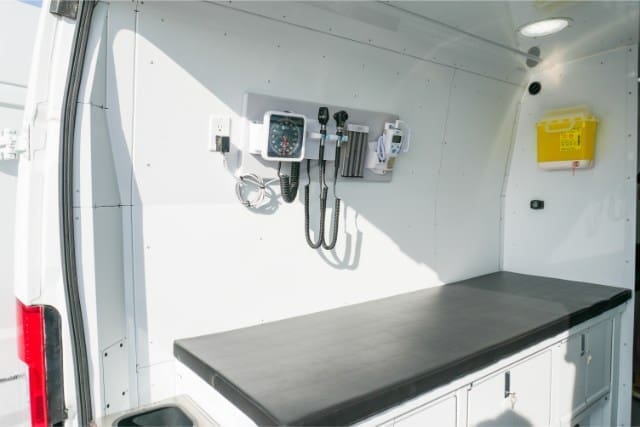
You came to this article asking a big question: Is my community too small for a mobile medical clinic investment? It’s a fair concern, especially when healthcare access and budgets are always tight.
Here’s what you learned today:
- Population size plays a role, but small doesn’t always mean too small.
- Access to healthcare, funding, partnerships, demand, and long-term sustainability all matter.
- A mobile clinic investment can save money, improve outcomes, and bring dignity to care.
At MoveMobility, we work alongside communities like yours to bring practical, lasting mobile healthcare solutions. We’ve learned that every community has unique challenges, and these challenges are just one more barrier to overcome. If you have questions or want guidance tailored to your community, click the button below to speak with a mobility expert who can help you navigate the process.
If you’re not ready to speak with an expert yet, we have a few other resources to take the next steps.
Start by reading our article on how to apply for funding for a mobile clinic. This will steer your investment in the right direction.
After that, check out our article on choosing the right mobile clinic manufacturer. You’ll learn some tips on figuring out the right fit for your needs.


